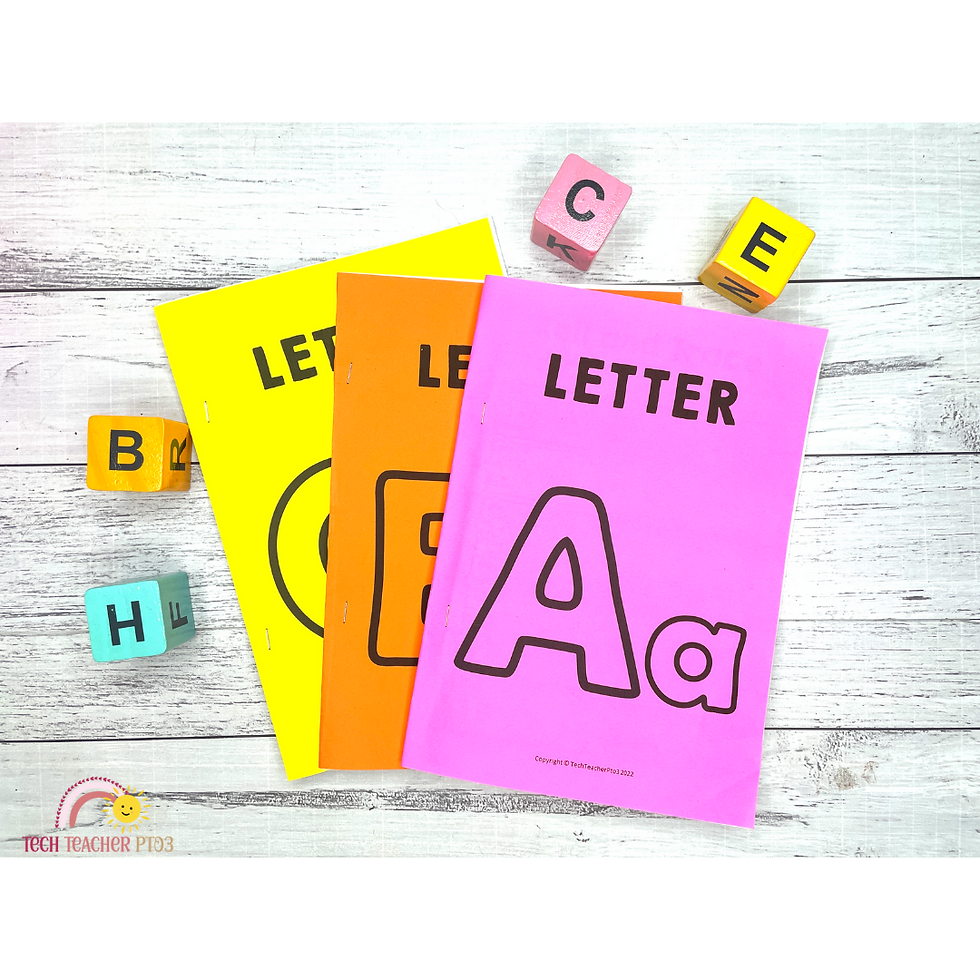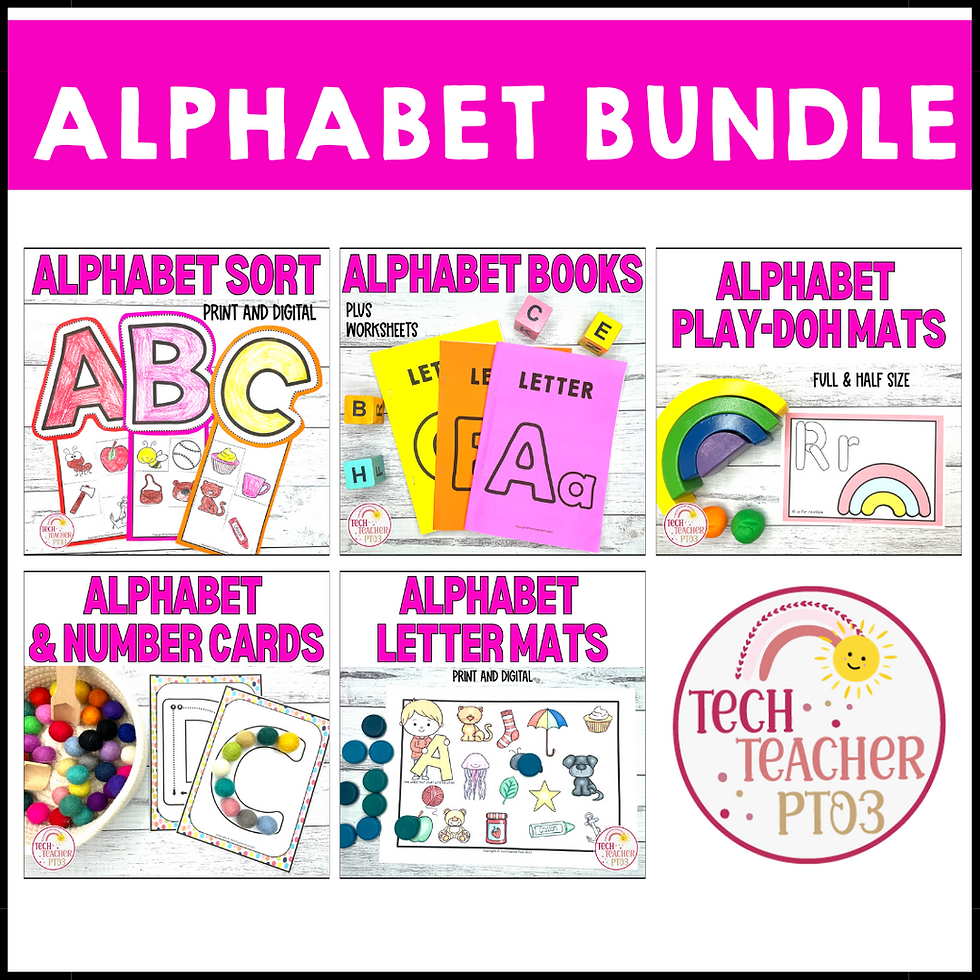Alphabet Kindergarten Activities
- TechTeacherPto3
- Feb 21, 2022
- 2 min read
Updated: Feb 21, 2022
Learning the alphabet is fundamental for kindergarten and Prep students because it forms the basis of many other literacy concepts. While most children know the alphabet letters before starting school, many children still need instructional activities on the letters of the alphabet when they arrive in Prep.
Some key rules to teaching the alphabet from my experience as a Prep teacher.
1. Do not try to teach all of the letters in one go. Pick a selection of letters (they don't have to be presented in sequence) and teach 2-3 letters a week. For example, one week I might teach A, W and Z because they are simple straight lines.
2. Keep the activities as hands-on as you can to keep students engaged. Young children still learn best by using manipulatives so use playdough to help students make those connections with letter shapes.
3. Keep mixing the activities to keep children interested. Learning letter formation can be boring if it's too repetitive, so keep activities short, engaging and rotate them frequently.
4. Give students ownership by letting them create little booklets with their work in them. These alphabet booklets let students continue to work on their letters when they have free time or in your morning session when everybody (including you!) is trying to focus. As a Prep teacher, I always had a little booklet for each letter and would pull them out for their English lessons each week.
5. Finger strength and pencil control are needed for tracing so be patient. It takes time to master letter tracing but it's worth putting the practice in each day to help them start writing.
6. Let students look for and find letters in different fonts. This is a real-world type of activity. Fonts come in different shapes and sizes and students need to be able to recognise different letters in different fonts.
7. Focus on the shape of letters. The letters I've personally found students struggle with the most are c, g and r. Those shapes take some mastery because they are a controlled curve and require placement on the page in a particular way. Just playing with the shape through placing manipulatives on it, tracing it, placing playdough on it or cutting it out are all helpful ways to reinforce the shape of tricky letters.
8. Look for letters in short stories and highlight or underline them. This is another real-world activity where you can either create a short story with some words with beginning sounds or look for them in picture books.
9. Where possible, try to get a short digital activity in your alphabet activities. Students need basic digital skills, even if it is just clicking and dragging. You can create simple look and find alphabet activities, such as this digital activity, with SeeSaw, Google Slides or PowerPoint.
You can find these activities in the Alphabet Bundle here.
Subscribers can also access a free sample for the letter A student booklet in the Freebie Library.
Not a subscriber? Why not subscribe today for free and access over 50 free resources, get an instant voucher for $5 off and be notified of upcoming sales. Click here to subscribe now.













Comments